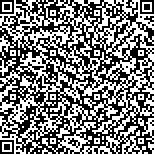| 摘要: |
| 采用匀浆法、冻融温差法、超声波法、直接研磨法和低温研磨法等5种破壁方法,研究了雨生红球藻提取虾青素时破壁方法对虾青素提取率的影响。结果表明,对雨生红球藻进行破壁是必要的。其中匀浆法、冻融温差法、超声波法、直接研磨法和低温研磨法等的最佳破壁条件为:匀浆法破壁时间22min,水为介质;冻融温差法破壁温度为-70℃,时间为12h,冻融2次,水为介质;超声功率400W,每次超声时间5s,共超声25min;直接研磨法研磨时间1min;加液氮低温研磨法破壁2次,每次时间0.5min;虾青素的提取率依次为0.76%、0.93%、1.03%、1.51%和3.21%。匀浆法和超声波法破壁由于要使用溶剂或介质,对后续的虾青素提取和分离会有影响,而直接研磨法在破壁过程中产生高温,降低了虾青素的生理活性,所以它们都不是雨生红球藻破壁的最佳方法。加液氮低温研磨法在破壁过程中不添加化学试剂,不产生污染,能最大限度地保留虾青素的生理活性,是所选方法中最好的一种。 |
| 关键词: 雨生红球藻 虾青素 细胞破壁 虾青素提取 |
| DOI: |
| 分类号: |
| 基金项目:浙江省自然科学基金资助项目,301208号。 |
附件 |
|
| THE BEST CELL-WALL BREAKING METHOD FOR EXTRACTING ASTAXANTHIN FROM HAEMATOCOCCUS PLUVIALIS |
|
ZHOU Xiang-Chi1, LIU Bi-Qian1, ZENG Qing-Guo2, JIANG Xia-Min1
|
|
1.Faculty of Life Sciences and Biotechnology, Ningbo University, Ningbo, 315211;2.Institute of Ocean and Fishers of Ningbo City, Ningbo, 315012
|
| Abstract: |
| Astaxanthin, a naturally occurring carotenoid pigment, is a powerful biological antioxidant that exhibits strong free radical scavenging activity and protects against lipid peroxidation and oxidative damage. Astaxanthin has become a focus of research with growing number of scientific publications, and be applied broadly in the fields of food, medicine and aquaculture.
Haematococcus pluvialis, a type of microscopic green algae, is one of the most important natural sources of carotenoid astaxanthin being used as a pigment or in aquaculture. However, the astaxanthin extraction from H. pluvialis is affected by thick sporopollen in cell wall of its cysts. Therefore, breaking up the cell wall is necessary in the procedure of the extraction. We tested four different cell-wall breaking methods for comparing the extraction efficiency, including homogenization, freezing-thawing, ultrasonicating and mortar-grinding. For each method, the optimal condition was examined along with the corresponding extraction rate calculated simultaneously. The results showed that 22-minute homogenization was long enough to break up the cell walls and could reach the extraction rate of 0.76%. For the freezing-thawing method, H. pluvialis was frozen at -70°C in water for 12 hours, then the sample was taken out from the refrigerator and thawed at room temperature. This procedure was repeated for two times; the extraction rate was 0.93%. In ultrasonic method, the sample was treated in (2 × 104)Hz–(2 × 109)Hz power of ultrasound for 25 minutes. This method reached the ex traction rate at 1.03%. However, the use of organic solvent in the homogenate method and ultrasonic method would cause a negative impact on extraction and purification of astaxanthin.
For the grinding method, mortar-grinding the sample for 1 minute was proper for the extraction of astaxanthin, reaching the extraction rate at 1.51%. Besides, the method is less expensive and simple so that it is applicable for large-scale production. The only side effect is the heat that produced during the grinding, which could destroy the biological activity of astaxanthin. To avoid it, liquid nitrogen was applied during grinding to reduce the air oxidation of astaxanthin, which enhanced the extract rate to 3.21%. Thus, the grinding method at low temperature is recommended. In future, the follow-up work will test the combination of the grinding with carbon dioxide supercritical fluid, to protect in maximum the biological activity of astaxanthin. |
| Key words: Haematococcus pluvialis, Astaxanthin, Cell-wall breaking, Astaxanthin extraction |
